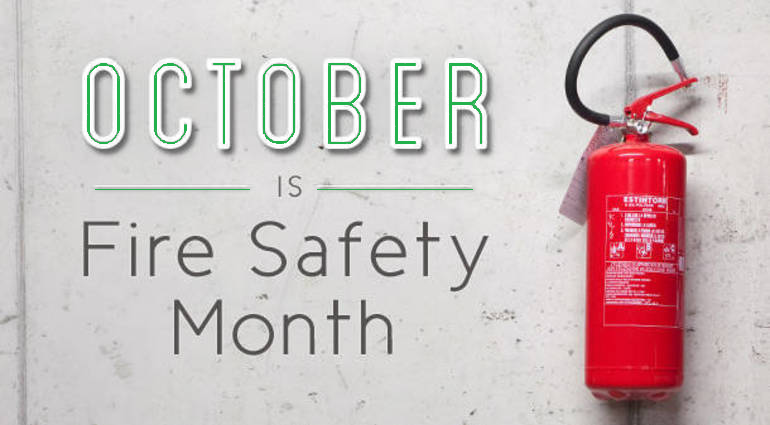
Learn Before the Burn
By: Mark Williams
Is your workplace or home fire proof? Each year, the National Fire Protection Association (NFPA) celebrates National Fire Safety Month in October with Oct. 7th-13th being national fire prevention week and Oct. 13th being National Home Fire Drill Day. According to the Bureau of Labor Statistics, in 2016, there were 88 occupational fatalities as a result of workplace fires or explosions. This is down from 2015, in which there were 121. While the statistics show that the number of fatalities due to fires or explosions in the workplace is on a downward slope, any number other than 0 is unacceptable and demands the attention from management, safety professionals and employees in every company. Not only do fires present a severe life safety hazard, they also can be detrimental to business success due to the possible destruction of business equipment and facilities. This campaign serves as a reminder to us all of the importance of fire safety awareness in both the workplace and our home lives.
Fire safety awareness in the workplace should be second nature and should be translated into our personal lives to keep our loved ones safe in the event of a fire as well. Take time this month to have a fire safety talk with your department at work. Review your emergency action plan, communicate supervisory roles, and walk evacuation routes with your team. In times of crisis, it is of human nature to rely on memory created through practice. October is the perfect time to conduct a fire drill before a real-life event occurs. Ensure nobody is left behind and all are in tune with their life safety route!
The safety reminders communicated in the work place can be easily translated to fire safety in the home. Establish a family emergency action plan, discuss escape routes with family members, and locate fire extinguishers in your home. Additionally, conduct a mock fire drill with your family members to ensure you and your loved ones know how to get out safely. During this drill, outline meeting places that are at a safe distance from the home. Designate a neighbor to contact for help in the event of an emergency. Simple exercises such as the aforementioned could mean the difference maker in your family making it out alive in the event of a fire in your home.
Below are key components to ensuring your workplace and home are fireproof:
- Eliminate Clutter – Exercise good housekeeping. Clutter can easily become a fuel source in the event of a fire, allowing a fire to spread quickly. Furthermore, clutter can restrict access to emergency equipment and exit routes.
- Designate Smoking Areas – Permit smoking only in designated smoking areas and provides means for extinguishing smoking materials safely.
- Fire Extinguishers – Maintain the appropriate type and number of fire extinguishers. Conduct monthly and annual extinguisher inspections to ensure they are in good, working condition. Provide training for employees on the correct use of fire extinguishers.
- Chemical Safety – Use and store chemicals safely. Read hazard warning labels and safety data sheets to determine flammability and other fire hazards. Ensure your chemical storage areas provide adequate ventilation for the storage of chemical or other hazardous substances.
- Waste Control & Storage – Limit the accumulation of flammable or combustible materials and residues as to prevent the risk for such materials contributing to a fire emergency.
- Exits – Ensure emergency exit route diagrams are posted and accessible in all areas of the facility for all employees to easily view. Additionally, ensure means of egress are well-lit with regulated exit signs and free from debris or clutter.
- Contact Information – Employees should have access to a list of emergency contact phone numbers in case of emergency. Remember that human nature is to panic in emergency situations; therefore, basics such as the company address, important phone numbers, and building floor plan should be posted on or with the emergency action plan.
Remember it is always better to be proactive rather than reactive and it is best to alleviate hazards or hiccups in times of peace than in times of chaos. Utilize the above tips to reduce the risk for catastrophe or at least minimize the damage. The reality is that fire emergencies and disaster situations can strike anyone, anytime, anywhere. So, remember, if a fire occurs in your workplace or home, don’t panic, A-C-T:

Related Topics: Workplace Safety, Fire Prevention, Safety Hazards, Behavior Based Safety, Safety Tips, Safety Culture, Emergency Action Plan, Home Safety, Jobsite Safety, Safety Awareness, Safety Articles